

 |
 |

RepositoryAircraft Design and Systems Group (AERO)
Reach this repository via:
http://repository.ProfScholz.de
|
Both collections are harvested by:




|
... listed by: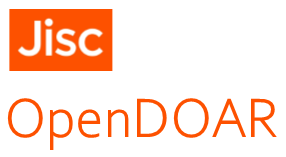

|
Collection A) is harvested by: stored by:

|


WorldCat Registry ID: 263356
ISIL: OCLC-DEADS
We started as a
Library on
WorldCat ("the world's largest library catalog, helping you find library materials online")
with only a small number of
Items  so far - but growing:
so far - but growing:
Items from Collection A and
Items from Collection B

WorldCat: "Ask a Librarian"
If you cannot find on this page what you need, find your contact to ask at AERO!



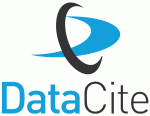



 map
map




|
At LU Hannover four links can be differentiated for my delivered data (there is no single link to cover all of this):
Scholz, Dieter (Author)
Scholz, Dieter (Editor)
Scholz, Dieter (Contributor, Supervisor, Examiner)
Lindemann, Dieter (Author)
At HAW Hamburg two links can be differentiated in the library catalog:
Scholz, Dieter (Author, editor, and supervisor of monographs and more)
Scholz, Dieter (Author of more recent papers)
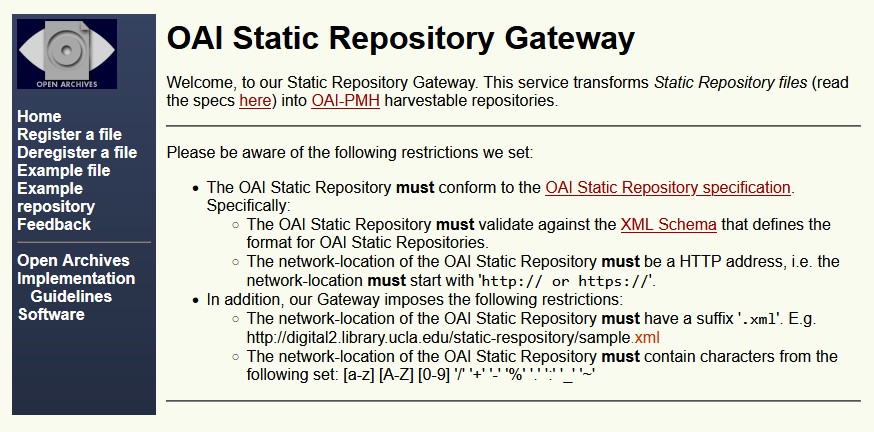
In order to supply distributors like WorldCat, with an OAI-PMH-compatible repository, the file Repository1.xml was built with Microsoft Access and a standard text Editor.
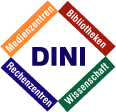 The repository scores
74.2%
towards fulfilling requirements (2013 standards) for its OAI interface according to the
DINI-Certificat (2016) for Open Access Repositories.
A higher score is not possible, because this repository is a simple
OAI Static Repository.
Static Repositories are by definition not able to support
The repository scores
74.2%
towards fulfilling requirements (2013 standards) for its OAI interface according to the
DINI-Certificat (2016) for Open Access Repositories.
A higher score is not possible, because this repository is a simple
OAI Static Repository.
Static Repositories are by definition not able to support
This repository uses also info:eu-repo Publication Types as required by OpenAIRE.
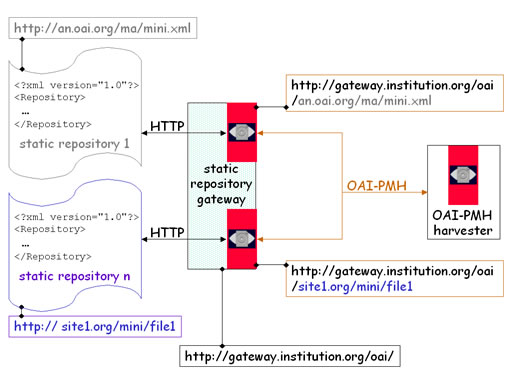
The figure shows the working principle of a static repository.
This repository provides what is named "http://site1.org/mini/file1" in the figure with
Repository1.xml.
Repository1.xml includes all documents from "Collection A) Student Results" and "Collection B) Research Results from AERO"
Repository2.xml includes only documents from "Collection A) Student Results", because it was harvested only by
NDLTD
which is specialized in
ETDs.
 Unfortunately, it seems there is no OAI Static Repository Gateway available in the world that could be used from outside its organization.
Installing an OAI Static Repository Gateway at HAW Hamburg in the
Rechenzentrum Berliner Tor (RZBT)
turned out to be impossible for administrative reasons.
Unfortunately, it seems there is no OAI Static Repository Gateway available in the world that could be used from outside its organization.
Installing an OAI Static Repository Gateway at HAW Hamburg in the
Rechenzentrum Berliner Tor (RZBT)
turned out to be impossible for administrative reasons.
A community has now been started at ZENODO. ZENODO offers for each community an OAI-PMH-compatible repository, as can be seen here. Now, all our ETDs will need to be uploaded also into the Digital Library – Projects & Theses – Prof. Dr. Scholz on ZENODO in order to be distributed. This approach is less flexible, but once set up, it will run a) without maintenance, b) on archived data and c) independent of unpredictable decisions at the RZBT.
The report has to meet (up to date) publication standards:
urn:nbn:de:gbv:18302-aero2017-12-13.019
The URN is part of the URL (the link). The date in the URN (above: 2017-12-13) is the delivery date of your report (as given on its front page). This is the date you (intend to) submit your report. "01" stands for the first document produced on this day at AERO. The last digit is called check digit. It was used in the German National Library (DNB) until 2024. We use the check digit for all documents for which we already assigned one. "https://nbn-resolving.org/" is called a resolver. It is a resolution service that converts the PI into the URL from which the document can be retrieved.
Since 2025, the German National Library (DNB) does not require a check digit anymore. It also became impossilbe to generate a check digit for a URN. For these two resons, the URN is now written without a check digit. It looks like this:
urn:nbn:de:gbv:18302-aero2017-12-13.01
10.7910/DVN/2HMEHB
The DOI is part of the URL (the link). The resolver for a DOI is https://doi.org/ . If you do not have any reseach data to publish, you can skip this section. Otherwise:
Deliver your data to be uploaded at Harvard Dataverse to Prof. Scholz. In return, you will get the DOI.
 TitleAndDocumentationPage.docx
Size:
826K
TitleAndDocumentationPage.docx
Size:
826K
This is what needs to be considered / provided to Prof. Scholz:
4.1) 3 Dewey Decimal Classifications (DDC) and 3 related German "Sachschlagwörter" (GND) [also called: Sachschlagwort (SWS)] from:
 Klassifikation_DDC_629.13.pdf
Size:
374K
Klassifikation_DDC_629.13.pdf
Size:
374K
Select e.g. 2 from the scientific field and one from the aircraft type under consideration.
4.2) One more (Nr. 4) Sachschlagwort (GND) (to give more freedome to describe everything of importance).
4.3) A class from Regensburger Verbundklassifikation (RVK):
 Klassifikation_RVK_ZO7000.pdf
Size:
231K
Klassifikation_RVK_ZO7000.pdf
Size:
231K
4.4) 4 Standardized English Keywords from FAST (Faceted Application of Subject Terminology) / Library of Congress Subject Headings (LCSH). See Link below!
All the data will be on the Landing Page for the report in the end.
It will be available for Google & Google Scholar and will be used for the uploads into the DNB and into the Repository in Hannover.
Example: LandingBurzlaff.html


Gemeinsame Normdatei (GND) u.a. mit Sachschlagwörtern (SWS) 
Gemeinsame Normdatei (GND)
Online Suche nach Sachschlagwörtern - Eingabe des Stichwortes 
Online Suche nach Sachschlagwörtern - Eingabe der DDC (DDC-Eingabe im Link!)  GND Explorer
GND Explorer 
More: GND Reconciliation, WebGND
Regensburger Verbundklassifikation (RVK) 
RVK Online
Library of Congress Subject Headings (LCSH) via FAST - Standardized English Keywords 
OCLC: Introduction: FAST (Faceted Application of Subject Terminology) derived from the Library of Congress Subject Headings (LCSH)
Manual selection of FAST Subjects based on autosuggest technology  (Help on usage)
(Help on usage)
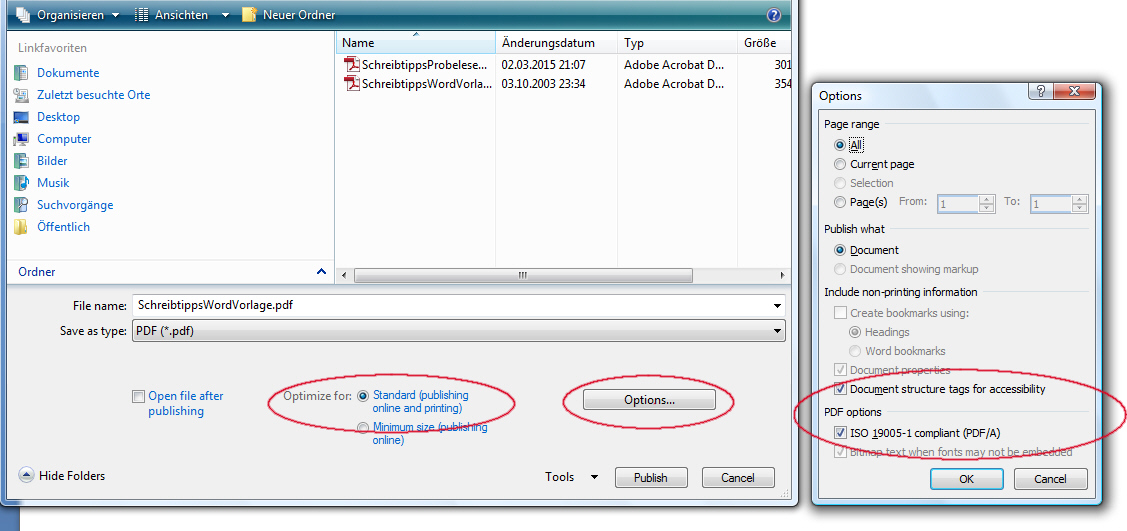
Use one or several of these PDF/A validators to see if your PDF/A qualifies:
| Name and Link | Organization | Type | Remark |
| PDF/A Validation | veraPDF | consortium | many standards, detailed output |
| PDF/A Online Verification Service | BFO | software company | many standards, max. 2 MB, recommended by PDFassociation |
| PDF/A Type Checking & Validation | PDFEN | software company | PDF/A type checking and validation, number of files per half hour limited, no detailed results |
| 3-HEIGHTS PDF VALIDATOR ONLINE TOOL | PDF Tools AG | software company | determines PDF/A type and validates against that type |
| PDF Validator, Preflight | Free Tool Online | Khoa Tran, software engineer | checks only against PDF/A-1a and PDF/A-1b |
If the PDF/A does not qualify try to convert the file e.g. to PDF/A-2B with PDFEN or iLovePDF:
| Name and Link | Organization | Type | Remark |
| PDF-FILE TO A PDF/A FILE | PDFEN | software company | Choose PDF/A format, OCR, optimization (with linearization that does not work), max. 15 files in 2 weeks with login |
| Convert PDF to PDF/A | iLovePDF | software company | Free PDF Suite (PDF-A conversion only limited). Does not seem to allow PDF linearization afterwards with "save as". |
| Online Document Converter (Output: PDF/A) | Neevia | software company | PDF/A format not specified, changes metadata, only PDF/A-1B, unlimited free |

The logo is the symbol for a landing aircraft. It links to the topic of this repository: "aviation". Moreover, the logo stands here for the collection of landing pages. Landing pages contain the (machine-readable) metadata to feed especially Google Scholar. As such, landing pages are key for the documents to be precisely found on the Internet. Also Google Custom Search - searching locally in this repository - depends to a large extend on what is contained on the landing pages. Note: An aircraft flying down the Instrument Landing System (ILS) with a glide slope of 3° and a typical Angle Of Attack (AOA) will have a nose up attitude. We stick here to this international symbol, because an aircraft nose up would be interpreted as an aircraft taking off.
Definition of Grey Literature:
Grey literature stands for manifold document types produced on all levels of government, academics,
business and industry in print and electronic formats that are protected by
intellectual property rights, of sufficient quality to be collected and
preserved by library holdings or institutional repositories, but not
controlled by commercial publishers i.e., where publishing is not the
primary activity of the producing body.
Document types (examples):
research and project reports, theses, conference proceedings, preprints, working papers, newsletters, technical reports,
recommendations and technical standards, patents, technical notes, data and statistics, presentations, academic courseware, lecture notes.
Document Types in Grey Literature
Guidelines for the Production of Scientific and Technical Reports : How to Write and Distribute Grey Literature (open PDF)
Richtlinien für die Erstellung wissenschaftlicher und technischer Berichte: Verfassen und Verbreiten grauer Literatur (PDF)
GreyNet International
http://greyguide.isti.cnr.it Good practices and resources in grey literature.
Wikipedia: Grey Literature
https://www.science.gov Gateway to U.S. Federal Science

In general, write your request like this: https://www.semanticscholar.org/search?year[0]=yyyy&year[1]=yyyy&q=Title&sort=relevance&pdf=true" Where: yyyy is the year of the publication Title is the title of the publication Example: https://www.semanticscholar.org/search?year[0]=2015&year[1]=2015&q=Aerodynamic Analysis with Athena Vortex Lattice (AVL)&sort=relevance&pdf=true

 Prof. Dr. Scholz
Prof. Dr. Scholz
 Aircraft Design and Systems Group (AERO)
Aircraft Design and Systems Group (AERO)
 Aeronautical Engineering
Aeronautical Engineering
 Faculty of Aviation and Automotive Systems
Faculty of Aviation and Automotive Systems
 Hamburg University of Applied Sciences
Hamburg University of Applied Sciences